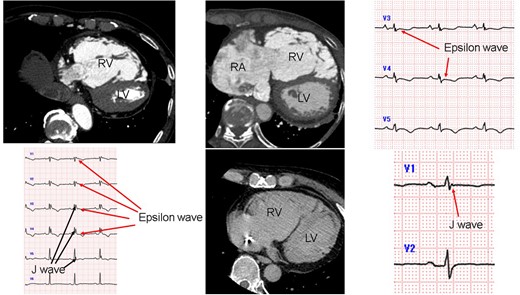-
PDF
- Split View
-
Views
-
Cite
Cite
N Funabashi, K Nakamura, T Sasaki, S Naito, Y Kobayashi, ECG education for first-grade medical students detecting Epsilon and J waves in patients with arrhythmogenic right ventricular cardiomyopathy in comparison with specialists for arrhythmia treatment, European Heart Journal, Volume 43, Issue Supplement_1, February 2022, ehab849.021, https://doi.org/10.1093/eurheartj/ehab849.021
Close - Share Icon Share
Abstract
Type of funding sources: None.
Medical students find Epsilon and J wave diagnoses by electrocardiogram (ECG) in patients with arrhythmogenic right ventricular cardiomyopathy (ARVC) difficult.
To evaluate the inter observer reliability for detecting Epsilon and J wave in patients with ARVC between medical students and specialists for arrhythmia treatment and seek the problem for the ECG education to the students.
Nine patients (six males, mean age 59 ± 17 years) meeting 2010 ARVC task-force criteria (Circulation. 2010; 121:1533-1541) underwent a retrospective ECG analysis. First-grade medical students undertook ECG studies for 9 months (4 h/week) by a cardiologist who was not a specialist in arrhythmia treatments according to the Japanese Heart Rhythm Society (JHRS). Medical students detected Epsilon and J waves in all nine ECGs. Two JHRS specialists in arrhythmia treatment independently detected Epsilon and J waves; when diagnoses differed, a final diagnosis was made together.
Epsilon waves were detected in five and eight patients by medical students and specialists, respectively. The distribution of Epsilon waves was determined in inferior and right-side precordial leads by students, but in right-side precordial leads only by specialists (Table). J waves were detected in nine and three patients by medical students and specialists, respectively. The J wave distribution was wider for medical students than specialists.

Abstract Figure. CT and ECG in ARVC



